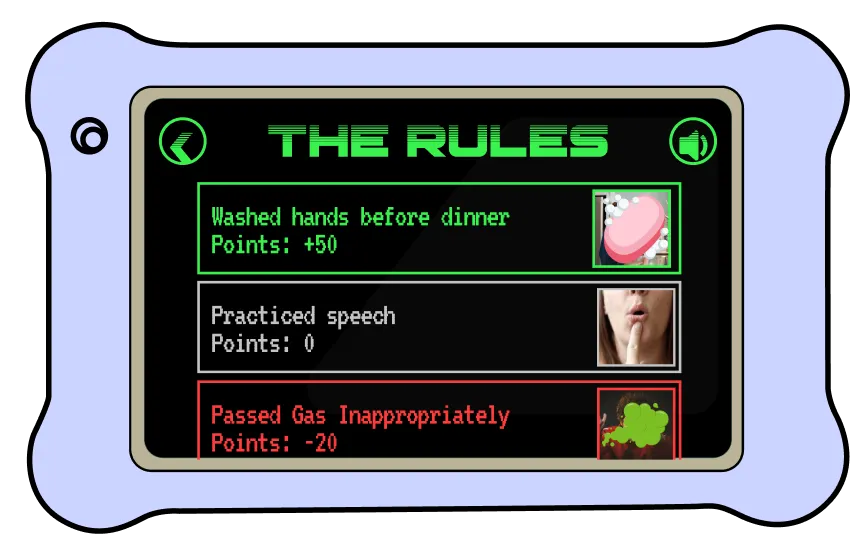Behavior checklists are practical tools that help parents and caregivers track their child’s actions, emotional responses, and developmental progress over time. By organizing behaviors into clear, observable categories, these checklists make it easier to spot patterns, identify strengths, and address areas that may need support—especially for children with learning differences or neurodivergence.
Key Takeaways:
- Behavior checklists help parents monitor patterns and support positive growth.
- Free printable PDFs make these tools easy to use at home or in the classroom.
- Especially helpful for kids with neurodivergent traits or behavioral challenges.
Table of Contents
Why Use Behavior Checklists?
As someone who works with kids, I’ve seen how behavior checklists provide clarity in understanding kids’ actions. They’re like a map, helping parents see where their kids are thriving and where they might need extra support. For parents of neurodivergent kids, these checklists can be lifesavers, offering insight into routines, emotional triggers, and progress over time.
Think of it this way: Have you ever tried to remember all the details of a busy week? Impossible, right? Behavior checklists capture those details, providing a clear snapshot of what’s working and what’s not. Parents can use them to communicate better with teachers, therapists, or doctors. It’s not just about tracking missteps; it’s about celebrating progress too.
Read more: 2-Year-Old Behavior Chart
The Benefits for Parents
Whether you’re trying to tackle daily challenges or just get a better sense of what works for your family, these checklists can make all the difference.
- Provides structure for observing and addressing behaviors. Instead of guessing what’s happening during tantrums or tricky moments, you’ll have a system in place to document and reflect. Over time, this structure helps you become more intentional in your responses.
- Helps identify triggers and patterns in your child’s actions. Maybe mornings are always a battle, or perhaps screen time leads to meltdowns. Tracking behaviors lets you spot trends you might otherwise miss. With this insight, you can adjust routines or environments to better support your child.
- Creates a record to share with professionals or educators. When you’re meeting with teachers, therapists, or doctors, detailed behavior records can help everyone stay on the same page. Instead of vague anecdotes, you’ll have concrete examples to discuss, leading to more effective solutions.
How to Use a Behavior Checklist
Using a behavior checklist isn’t complicated. Start by choosing a checklist that aligns with your goals. For example, some parents might focus on emotional regulation, while others want to track school performance or daily habits. Print the checklist and keep it in a place you’ll see often, like the fridge or your planner.
Consistency is key. Fill out the checklist at the same time each day, noting specific behaviors. Be honest and detailed—it’s not about judgment but understanding. Over time, patterns will emerge. Maybe your child struggles with transitions after school or thrives with visual reminders. These insights can guide your parenting strategies.
Read more: Discipline Behavior Chart Ideas for Home | Free Printable
Free Child Behavior Checklist PDFs
Steps to Get Started
Getting started with a behavior checklist is easier than you might think. A few simple steps can set you up for success and help you create a clearer picture of your child’s behaviors.
- Pick a checklist that meets your needs: Choose one that aligns with the specific behaviors or goals you want to track.
- Print the checklist and place it somewhere visible: Keep it in a spot you’ll see daily, like on the fridge or next to your planner.
- Fill it out daily, focusing on both strengths and challenges: Be consistent and honest, noting any patterns or surprises you observe.
With just a little effort each day, you’ll be able to spot patterns, celebrate wins, and identify areas that need attention. It’s a small habit that can lead to big insights!
Tips for Success
When using these tools, remember that flexibility matters. If one approach doesn’t work, tweak it. For example, some parents prefer to track behaviors digitally using apps, while others like the tactile nature of pen and paper. Find what suits your family’s routine.
Also, involve your kids when appropriate. Older kids might enjoy filling out parts of the checklist themselves, giving them a sense of ownership and self-awareness. This can be especially empowering for neurodivergent kids who benefit from structured routines.
Goally | Apps That Build Behavior & Life Skills for Kids
Want to keep your child motivated while building essential behavior and life skills? Goally’s skill-building tablet is designed to celebrate small wins and help your child grow. Our Behavior Tracker helps you reward your kid for specific skills, like “being kind” or “flushing the toilet.”

By setting clear expectations and rewarding their efforts, you foster a positive environment for your child to flourish in their behavioral skills journey.
Behavior checklists aren’t just about managing challenges; they’re about celebrating growth. By using these tools, you’re giving your kids the structure and support they need to thrive. And isn’t that what every parent wants?
Resources:
FAQs about Behavior Checklists
What is a behavior checklist?
A behavior checklist is a tool used by parents, teachers, and professionals to monitor and track specific behaviors in children. It helps identify patterns and areas that may need intervention or support.
How can a behavior checklist help my child?
A behavior checklist can help by providing a structured way to observe and document your child's behaviors over time. This can be useful for identifying triggers, tracking progress, and communicating with educators or healthcare providers.
What should be included in a behavior checklist?
A behavior checklist should include specific behaviors you want to monitor, the frequency of these behaviors, and any situational factors. It can also include sections for comments or notes to provide additional context.
How often should I use a behavior checklist?
The frequency of using a behavior checklist depends on the specific needs of your child and the behaviors being tracked. It can be used daily, weekly, or as needed to gather consistent data.
Can behavior checklists be used for all age groups?
Yes, behavior checklists can be adapted for use with children of all age groups. The key is to tailor the checklist to be age-appropriate and relevant to the specific behaviors you are monitoring.

Hennah is an experienced writer and researcher, helping children with autism, ADHD, and other neurodivergent conditions. As a blog contributor for Goally, she combines her deep understanding of neurodiversity with practical advice, offering valuable insights to parents and educators.





